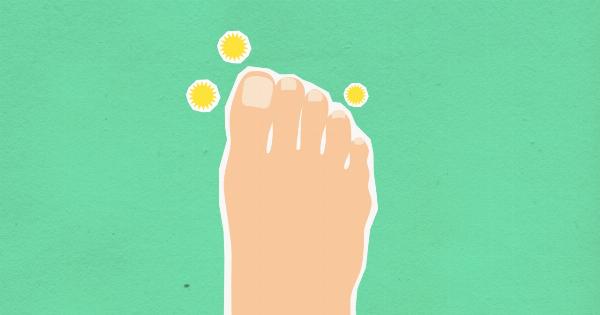Sex is usually considered a pleasurable and healthy activity. However, not all types of sex are equal when it comes to health risks. Some sexual practices can pose serious threats to your physical and mental well-being.
While there are risks associated with sexual activity in general, certain behaviors can increase the likelihood of adverse outcomes. In this article, we’ll take a closer look at some types of sex that can be harmful to your health.
1. Unprotected sex
Unprotected sex refers to sex without the use of a condom or other hormonal or barrier form of contraception.
This type of sex increases the risk of transmission of sexually transmitted infections (STIs), including HIV/AIDS, chlamydia, gonorrhea, syphilis, and herpes.
STIs can have serious long-term consequences, including infertility, chronic pain, cancer, and death. It’s essential to practice safe sex by using appropriate contraception and getting tested regularly if you’re sexually active.
2. Non-consensual sex
Non-consensual sex refers to any sexual act that occurs without the explicit consent of both partners. It’s also known as sexual assault or rape. Non-consensual sex can have severe physical and psychological effects on the victim.
Some of the physical consequences of non-consensual sex include sexually transmitted infections, unwanted pregnancy, physical injuries, and even death.
The psychological effects of sexual assault can include shame, fear, anxiety, depression, and post-traumatic stress disorder (PTSD).
3. Anal sex
Anal sex refers to sexual activity involving penetration of the anus by a penis or other object. While anal sex can be a pleasurable experience, it can also increase the risk of infections and injuries.
The anus lacks natural lubrication, which can lead to painful tearing and bleeding during sex. There is also an increased risk of sexually transmitted infections due to the rectum’s high concentration of blood vessels and thin lining.
4. Oral sex
Oral sex refers to sexual activity involving the mouth, lips, or tongue. While oral sex is generally considered safe, it can still transmit certain infections, such as herpes, gonorrhea, chlamydia, and syphilis.
Oral sex carries a lower risk of HIV transmission compared to vaginal and anal sex. However, it’s still possible to contract HIV through oral sex, especially if either partner has cuts or sores in the mouth or on the genitals.
5. Group sex
Group sex refers to sexual activity involving more than two people. Engaging in group sex can increase the risk of STIs, unwanted pregnancies, and physical injuries.
Group sex can also lead to emotional and psychological difficulties, such as jealousy, envy, guilt, and shame. Additionally, group sex can increase the risk of sexual violence and exploitation.
6. Bondage and BDSM
Bondage and BDSM refers to sexual activity involving consensual power exchange, restraints, and physical stimulation. While it can be a pleasurable experience for some, it can also pose significant risks to physical and emotional well-being.
Physical risks of bondage and BDSM include bruises, burns, cuts, and broken bones. Additionally, bondage and BDSM can lead to psychological concerns such as anxiety, depression, and PTSD.
7. Sex while under the influence
Having sex while under the influence of drugs or alcohol can significantly compromise your judgment, and increase your risk-taking behavior.
Engaging in unprotected sex while under the influence can lead to the transmission of STIs and unwanted pregnancies. Additionally, it can lead to physical injuries, sexual assault, and risky sexual behavior that can have long-term health consequences.
8. High-risk sexual behavior
High-risk sexual behavior refers to any sexual activity involving excessive partners, unprotected sex, and sex with individuals who have a known history of STIs or HIV.
Engaging in high-risk sexual behavior significantly increases the likelihood of contracting STIs or HIV. Additionally, it can increase your risk of unwanted pregnancies, physical injuries, and sexual assault.
9. Sex with underage individuals
Sex with underage individuals is a criminal offense and can result in significant legal consequences.
It can also lead to physical, psychological, and emotional harm to the minor. Sexual activity with minors is considered child abuse and can have long-term consequences on the victim’s mental and physical well-being.
10. Sex addiction
Sex addiction refers to a compulsive behavior towards sexual activity despite the negative consequences it may cause. Sex addiction can lead to the development of mental health conditions, such as anxiety, depression, and bipolar disorder.
It can also lead to risky sexual behaviors, such as unprotected sex, multiple partners, and sex with sex workers, which can increase the likelihood of contracting sexually transmitted infections.
Additionally, sex addiction can lead to relationship difficulties, social isolation, and financial and employment problems.
Conclusion
While sex is a natural, healthy, and pleasurable activity, not all types of sex are equal regarding health risks.
Engaging in certain sexual practices can increase the likelihood of contracting STIs, unwanted pregnancies, physical injuries, and psychological and emotional harm. It’s essential to practice safe sex, get tested regularly if you’re sexually active, and seek professional help if you’re experiencing problems related to sexual activity.



























